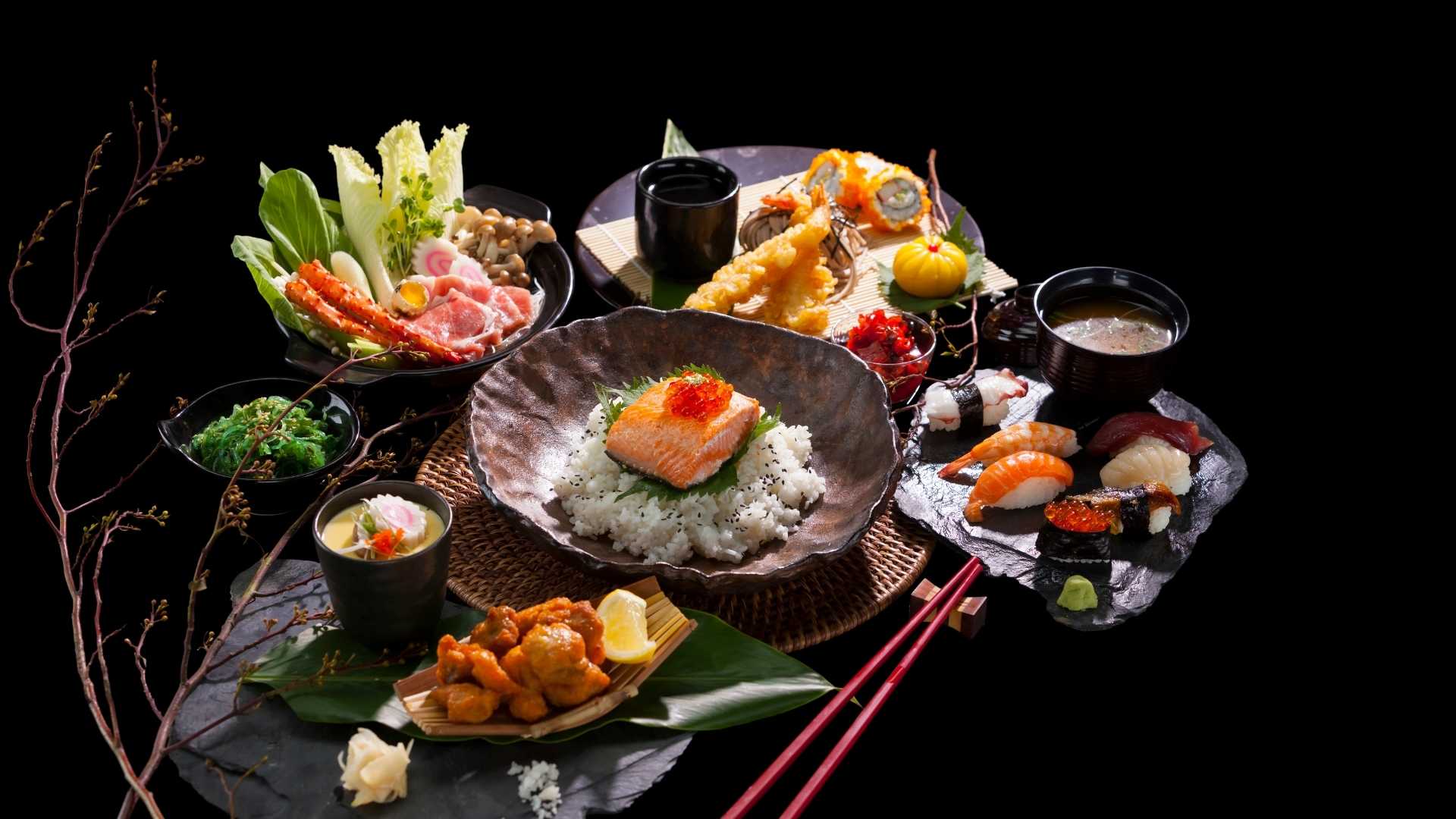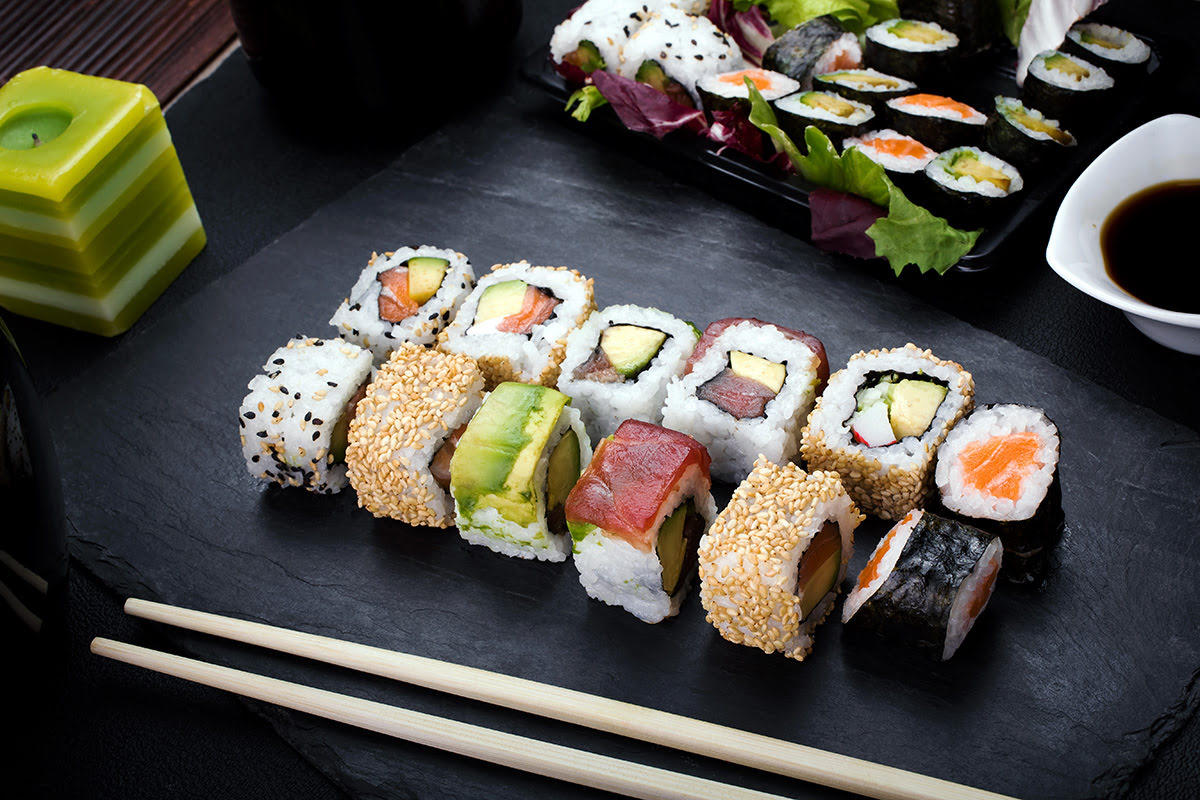Embark on a culinary journey with our complete jap meals drink menu, the place the flavors of Japan dance harmoniously. From the undying traditions of sake and inexperienced tea to the trendy inventions of craft beers and fruit-infused sake, this menu provides a tantalizing exploration of Japan’s wealthy gastronomic heritage.
Immerse your self within the historical past, tradition, and artistry at the back of every dish and drink, as we information you thru a symphony of flavors that may satisfaction your palate and captivate your senses.
Eastern Delicacies Review
Eastern delicacies, recognized for its freshness, subtle flavors, and complex presentation, has a wealthy historical past and various influences that experience formed its distinctive personality. Rooted in historical Eastern traditions and influenced by means of neighboring nations, Eastern meals has advanced right into a culinary artwork shape this is celebrated international.
Key traits of Eastern delicacies come with an emphasis on contemporary, seasonal elements, a steadiness of flavors, and a focal point on umami, the 5th style sensation this is frequently described as savory or meaty. Eastern dishes are most often mild and wholesome, with a number of textures and flavors that supplement every different.
Common Eastern Dishes
One of the hottest Eastern dishes come with:
- Sushi:Vinegared rice crowned with uncooked fish, seafood, or greens, frequently served with soy sauce and wasabi.
- Sashimi:Thinly sliced uncooked fish or seafood, served with soy sauce and wasabi.
- Ramen:Noodle soup made with a flavorful broth, noodles, and quite a lot of toppings comparable to beef, greens, and eggs.
- Tempura:Deep-fried seafood or greens, frequently served with a dipping sauce.
- Yakitori:Grilled hen skewers, frequently seasoned with tare sauce.
Conventional Eastern Beverages

Eastern tradition is wealthy in conventional beverages which have been loved for hundreds of years. Those drinks vary from the long-lasting sake and shochu to the refreshing inexperienced tea, every with its distinctive manufacturing strategies, flavors, and cultural importance.
Sake
Sake, sometimes called Eastern rice wine, is a fermented alcoholic beverage constructed from rice, water, yeast, and koji (a mould). The manufacturing procedure comes to more than one steps of sprucing the rice, steaming it, and including koji and yeast to transform the starch into sugar.
The ensuing liquid is then fermented for a number of weeks or months earlier than being pressed, filtered, and bottled.
Sake is most often served chilled or at room temperature and has a gentle, relatively candy taste with a mild aroma. It’s frequently paired with conventional Eastern dishes comparable to sushi, sashimi, and tempura.
Shochu
Shochu is a distilled spirit constructed from quite a lot of elements comparable to rice, barley, candy potatoes, or buckwheat. The manufacturing procedure comes to fermenting the bottom factor with koji and yeast, then distilling the ensuing liquid to create a high-proof spirit.
Shochu may also be loved neat or combined with water or different drinks. It has a blank, crisp taste with various ranges of sweetness or bitterness relying at the base factor used.
Inexperienced Tea
Inexperienced tea is a well-liked non-alcoholic beverage constructed from the leaves of the Camellia sinensis plant. The leaves are steamed, rolled, and dried to maintain their herbal flavors and vitamins.
Inexperienced tea is understood for its refreshing, relatively sour style and excessive antioxidant content material. It’s frequently served scorching or chilly and may also be loved without or with added sweeteners or flavors.
Recent Eastern Beverages

Eastern beverages have gone through a vital evolution lately, embracing new flavors and influences whilst staying true to conventional roots. Fashionable Eastern beverages show off a fusion of custom and innovation, catering to various palates.
The upward thrust of craft breweries has ended in a surge in approval for Eastern craft beers. Those beers experiment with quite a lot of types, from conventional lagers to hoppy IPAs, providing quite a lot of flavors and aromas.
Fruit-Infused Sake
Conventional sake is getting a contemporary twist with the advent of fruit-infused sorts. Those sakes incorporate contemporary culmination, comparable to yuzu, strawberry, and peach, developing colourful and fragrant drinks. The wonder and acidity of the culmination steadiness the umami flavors of sake, leading to a refreshing and approachable drink.
Non-Alcoholic Drinks
The rising well being awareness has ended in a requirement for non-alcoholic drinks in Japan. Eastern tea tradition continues to thrive, with matcha and hojicha becoming more popular international. Moreover, new non-alcoholic choices have emerged, comparable to glowing fruit waters and kombucha, catering to these searching for more healthy possible choices.
Affect of Western Tradition
Western tradition has had a noticeable affect on Eastern drink tendencies. The recognition of cocktails has greater, with Eastern bartenders showcasing their abilities in developing cutting edge and complicated beverages. Eastern elements, comparable to yuzu and sake, are frequently included into those cocktails, leading to distinctive and flavorful creations.
Eastern Meals and Drink Pairings
When pairing Eastern food and drink, it is very important to imagine the flavour profiles and textures of each parts. The purpose is to create a harmonious steadiness that complements the joy of every.
Conventional Eastern delicacies frequently options subtle flavors and lightweight textures, whilst fresh dishes would possibly show off bolder flavors and various textures. Working out those nuances is vital to picking suitable beverage pairings.
Vintage Pairings
Vintage Eastern food and drinks pairings have stood the take a look at of time for a reason why. Those mixtures be offering a harmonious steadiness of flavors and textures.
- Sushi and Sake:The sophisticated flavors of sushi supplement the crisp, blank style of sake. The acidity in sake cuts during the fattiness of the fish, whilst the umami in sushi complements the savoriness of sake.
- Tempura and Beer:The crispy texture of tempura pairs smartly with the refreshing carbonation of beer. The bitterness of beer balances the richness of the tempura batter, whilst the maltiness enhances the savory fillings.
li> Ramen and Shochu:The wealthy, flavorful broth of ramen pairs smartly with the sleek, earthy style of shochu. The shochu’s acidity is helping lower during the fattiness of the broth, whilst its heat enhances the savory flavors of the ramen.
Leading edge Pairings
As Eastern delicacies evolves, so too do the pairings that accompany it. Leading edge pairings frequently show off sudden taste mixtures and textures.
- Wagyu Pork and Purple Wine:The wealthy, marbled texture of Wagyu red meat pairs smartly with the daring flavors of pink wine. The tannins in pink wine lend a hand lower during the fattiness of the meat, whilst the fruitiness enhances the savory flavors.
- Uni and Champagne:The sophisticated, briny taste of uni pairs strangely smartly with the crisp, bubbling nature of champagne. The champagne’s acidity cuts during the richness of the uni, whilst its bubbles improve the umami flavors.
- Sashimi and Gin and Tonic:The blank, contemporary flavors of sashimi pair smartly with the botanical notes of gin and tonic. The gin’s juniper berries supplement the subtle flavors of the fish, whilst the tonic’s bitterness supplies a refreshing distinction.
Eastern Drink Menu Design: Eastern Meals Drink Menu

Designing an efficient Eastern drink menu is very important for showcasing the various vary of drinks to be had. Listed here are some key issues to create a visually interesting and informative menu:
Group and Format
- Arrange beverages into transparent classes, comparable to sake, beer, shochu, cocktails, and non-alcoholic drinks.
- Use a logical structure that makes it simple for purchasers to navigate the menu.
- Believe the use of sections or subheadings to split several types of beverages.
Visible Attraction, Eastern meals drink menu
- Incorporate high quality pictures or illustrations to show off the beverages and make the menu extra visually interesting.
- Use colours, fonts, and graphics that replicate the environment and theme of the eating place.
- Believe the use of other font styles and sizes to focus on necessary knowledge.
Descriptive Language
- Use descriptive language to focus on the important thing elements and flavors of every drink.
- Supply transient descriptions of the brewing or distillation procedure for alcoholic drinks.
- Come with details about the foundation or area of the beverages so as to add authenticity and pastime.
FAQ Segment
What’s the most well liked Eastern dish?
Sushi is arguably probably the most well known and loved Eastern dish international.
What’s the distinction between sake and shochu?
Sake is a fermented rice wine, whilst shochu is a distilled spirit constructed from rice, barley, or candy potatoes.
Can I in finding non-alcoholic Eastern beverages to your menu?
Sure, we provide a collection of non-alcoholic drinks, together with conventional teas, fruit juices, and fashionable mocktails.
